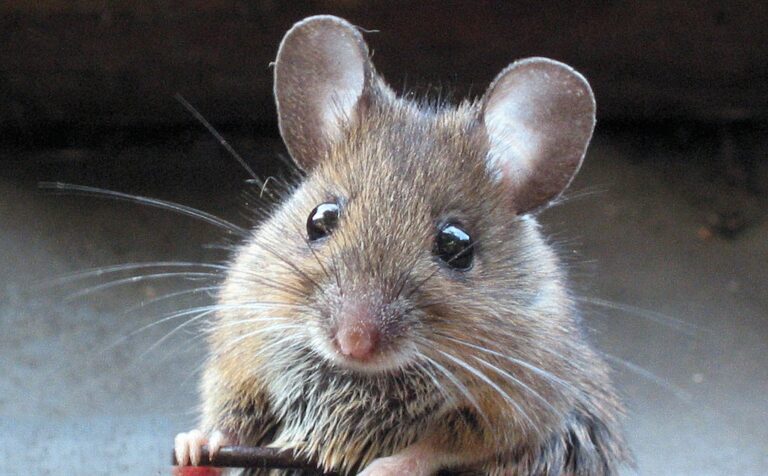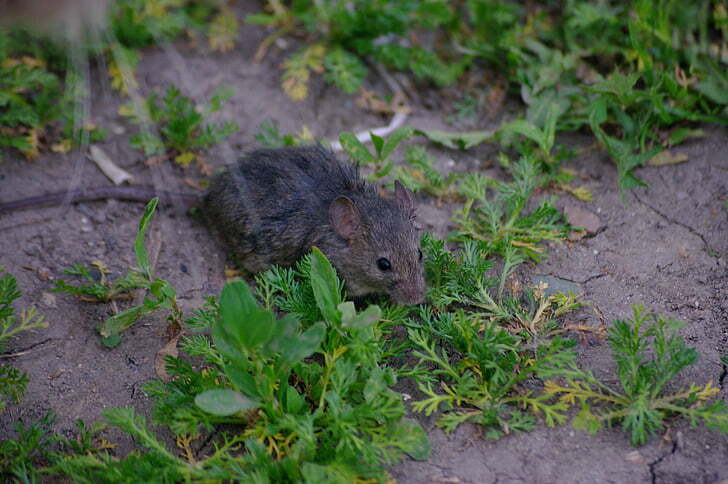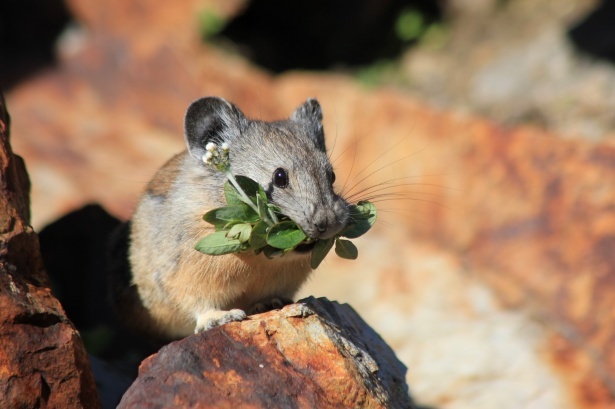Field Mice in Urban Areas: Causes, Effects, and Solutions
Introduction
Definition of field mice
Field mice, also known as Apodemus sylvaticus, are small rodents that are commonly found in urban areas. They are characterized by their brown fur, long tails, and small ears. Field mice are known for their ability to adapt to various environments, including urban settings. They are often considered pests due to their tendency to invade homes and damage property. However, field mice play an important role in the ecosystem as they help control insect populations and serve as a food source for predators. To address the issues caused by field mice in urban areas, it is important to implement effective solutions such as proper sanitation practices, sealing entry points, and using humane trapping methods. By taking these actions, we can minimize the negative effects of field mice and create a harmonious coexistence between humans and wildlife.
Overview of urban areas
Urban areas are densely populated regions that are characterized by a high concentration of human activity. They are the result of rapid urbanization and have become the primary habitat for many species, including field mice. The presence of field mice in urban areas is a complex issue that has both causes and effects. One of the main causes is the availability of food sources, such as garbage and leftover food from human settlements. This abundance of food attracts field mice and encourages their population growth. The effects of field mice in urban areas can be detrimental to both humans and the environment. They can damage crops, spread diseases, and cause structural damage to buildings. Additionally, field mice can compete with native species for resources and disrupt the balance of the ecosystem. To address this issue, several solutions have been proposed. These include implementing proper waste management practices, sealing entry points to prevent mouse infestations, and educating the public about the importance of keeping urban areas clean. By taking these measures, we can mitigate the negative impacts of field mice in urban areas and create a healthier and more sustainable environment.
Importance of studying field mice in urban areas
Studying field mice in urban areas is of utmost importance due to the significant impact they have on the ecosystem. These small creatures play a crucial role in maintaining the balance of the urban environment. By studying their behavior and habitat preferences, researchers can gain valuable insights into the overall health and biodiversity of the ecosystem. Additionally, field mice are known to be indicators of environmental changes, making them important bioindicators for monitoring urban areas. Understanding the causes, effects, and solutions related to field mice in urban areas is essential for implementing effective conservation strategies and ensuring the sustainability of urban ecosystems.
Causes of Field Mice in Urban Areas
Loss of natural habitat
Loss of natural habitat is one of the key factors contributing to the proliferation of field mice in urban areas. As cities expand and natural landscapes are replaced with concrete and buildings, the available space for wildlife diminishes. This forces field mice to seek refuge in urban environments, where they can find food, shelter, and breeding opportunities. The loss of natural habitat also disrupts the ecological balance, as field mice are forced to compete with other urban wildlife, such as brown rats. Brown rat facts reveal that these rodents are highly adaptable and aggressive, posing a threat to both humans and other small mammals. Therefore, it is crucial to address the loss of natural habitat and implement solutions that create suitable environments for field mice while minimizing conflicts with other urban wildlife species.
Availability of food sources
The availability of food sources is a crucial factor in understanding the presence of field mice in urban areas. These small rodents are attracted to areas with abundant food options, such as residential neighborhoods and commercial spaces. One of the key factors that contribute to the availability of food for field mice is the presence of open garbage bins and improperly stored food. These provide easy access to food scraps and leftovers, creating an ideal environment for field mice to thrive. Additionally, the lack of proper waste management practices in urban areas further exacerbates the issue. It is important to implement measures to ensure that garbage bins are securely closed and food waste is properly disposed of to reduce the attractiveness of urban areas to field mice.
Human activities and urbanization
Human activities and urbanization have had a profound impact on the presence and behavior of field mice in urban areas. As cities continue to expand and natural habitats are destroyed, field mice are forced to adapt to their new surroundings. The increase in human infrastructure provides ample shelter and food sources for these small rodents, leading to a rise in their population. Additionally, the introduction of non-native plant species and the use of pesticides in urban areas have altered the mice’s natural habitat and food availability. These changes have caused field mice to become more resilient and resourceful in their search for survival. Despite their small size, field mice have proven to be highly adaptable to the challenges posed by urbanization. They have developed new foraging strategies and have learned to exploit human resources, such as discarded food and waste. This ability to thrive in urban environments has made field mice a common sight in cities around the world. However, their presence can also lead to various issues, including damage to property and the transmission of diseases. Therefore, it is crucial to understand the causes and effects of field mice in urban areas in order to develop effective solutions that balance the needs of both humans and wildlife.
Effects of Field Mice in Urban Areas
Damage to property
Field mice can cause significant damage to property in urban areas. Their constant gnawing and chewing can lead to structural damage to buildings, electrical wiring, and insulation. These pests are particularly attracted to warm and cozy spaces, making homes and commercial buildings prime targets. Additionally, field mice can contaminate food and spread diseases, posing health risks to humans. It is crucial to implement specialized protection against common pests like field mice to prevent costly damages and maintain a safe and hygienic environment.
Spread of diseases
The spread of diseases is a significant concern when it comes to field mice in urban areas. These small rodents can carry various diseases, posing a potential threat to human health. One particular disease that is associated with field mice is the indianmeal moth. This moth is known to infest stored food products, causing contamination and potential health risks. It is important to be aware of the presence of field mice in urban areas to prevent the spread of diseases like the indianmeal moth. By implementing effective pest control measures and practicing proper sanitation, the risk of disease transmission can be minimized.
Impact on local ecosystems
The presence of field mice in urban areas has a significant impact on local ecosystems. These small rodents are known to disrupt the delicate balance of the ecosystem by preying on various organisms and causing damage to vegetation. One of the key effects of field mice in urban areas is their contribution to the increase in carpenter ant populations. Carpenter ants are important decomposers in the ecosystem, but their populations can become unbalanced when field mice are present. This imbalance can lead to an overabundance of carpenter ants, which in turn can have negative consequences for the ecosystem. The presence of field mice also leads to a decrease in biodiversity as they feed on a wide range of plants and insects, disrupting the food chain and reducing the availability of resources for other species. In order to mitigate the impact of field mice on local ecosystems, it is important to implement effective pest control measures and create habitat modifications to discourage their presence.
Challenges in Managing Field Mice in Urban Areas
Difficulty in detection and control
Field mice in urban areas pose a significant challenge when it comes to their detection and control. Due to their small size and ability to hide in various crevices and burrows, identifying their presence becomes difficult. Moreover, their nocturnal behavior adds another layer of complexity to the task. Traditional methods of pest control often fall short in effectively targeting these elusive creatures. The consequences of a high field mice population in urban areas can be detrimental. They can cause damage to infrastructure, contaminate food sources, and spread diseases. To address this issue, innovative solutions are required that combine advanced detection techniques with targeted control measures. By leveraging technology and scientific research, we can enhance our ability to detect and control field mice in urban areas, ensuring the safety and well-being of our communities.
Public perception and attitudes
Public perception and attitudes play a crucial role in addressing the issue of field mice in urban areas. As these small rodents become more prevalent in cities, it is essential to understand how the public perceives them and their attitudes towards their presence. BoldPassages This understanding can help guide the development of effective solutions and strategies to mitigate the negative effects of field mice on urban environments. BoldPassages Additionally, public perception and attitudes can influence the level of support and cooperation from residents in implementing these solutions. By addressing any misconceptions or fears associated with field mice, it is possible to foster a positive attitude towards their management and create a more harmonious coexistence between humans and wildlife in urban settings.
Environmental concerns
Environmental concerns play a crucial role in understanding the impact of field mice in urban areas. These small rodents not only pose a threat to human health but also contribute to the degradation of the environment. One of the key concerns associated with field mice is their role in the proliferation of cockroaches. Cockroaches are known carriers of various diseases and their presence in urban areas can lead to serious health risks. It is important to address this issue by implementing effective pest control measures and creating awareness among the residents. By taking proactive steps to control the population of field mice and cockroaches, we can mitigate the environmental concerns associated with their presence in urban areas.
Solutions for Managing Field Mice in Urban Areas
Implementing integrated pest management strategies
Implementing integrated pest management strategies is crucial in effectively controlling field mice populations in urban areas. By understanding the behavior and habits of field mice, we can develop targeted and sustainable solutions to mitigate their presence. Integrated pest management combines various methods such as habitat modification, exclusion, and population control to achieve long-term success. Habitat modification involves removing or altering conditions that attract field mice, such as food sources and hiding places. Exclusion techniques include sealing entry points and installing barriers to prevent mice from accessing buildings and structures. Population control methods, such as trapping and baiting, can be used to reduce the mouse population. By implementing these integrated pest management strategies, we can minimize the negative effects of field mice in urban areas and create a healthier and safer environment for both humans and wildlife.
Creating natural habitats and green spaces
Creating natural habitats and green spaces is crucial in mitigating the negative effects of urbanization on field mice populations. Urban areas often lack the necessary vegetation and shelter that field mice require for survival. By incorporating natural habitats and green spaces into urban landscapes, we can provide field mice with suitable living conditions and reduce their reliance on human-made structures. Additionally, these natural habitats can attract other wildlife species, creating a more diverse and balanced ecosystem. To achieve this, professional services such as landscape architects and ecologists play a vital role. They have the expertise to design and implement green spaces that meet the specific needs of field mice and other wildlife. By working with professionals, we can ensure that our efforts to create natural habitats are effective and sustainable.
Educating the public about prevention and control
Educating the public about prevention and control is crucial in addressing the issue of field mice in urban areas. By providing information on the causes, effects, and solutions, we can empower individuals to take action and contribute to the reduction of field mice populations. One key aspect of education is promoting non-toxic bed bug control methods. Bed bugs are a common issue in urban areas, and many people resort to using harmful chemicals to eradicate them. However, by highlighting non-toxic alternatives, such as natural repellents and heat treatments, we can educate the public about safer and more environmentally friendly options. Additionally, it is important to emphasize the importance of regular cleaning and proper waste management to prevent the attraction of field mice. By educating the public about these prevention and control measures, we can create a more informed and proactive community in tackling the field mice problem.
Conclusion
Summary of key points
Field mice in urban areas can cause a range of issues, including damage to property and the spread of diseases. These rodents are attracted to urban environments due to the availability of food and shelter. They can create nests in homes, gardens, and other structures, leading to structural damage and potential health hazards. Additionally, field mice can transmit diseases such as hantavirus and salmonellosis to humans through their droppings and urine. To address this problem, it is important to implement effective rodent control measures, including proper sanitation practices, sealing entry points, and using traps or baits. Public education and awareness campaigns can also play a crucial role in preventing the proliferation of field mice in urban areas.
Importance of ongoing research
Ongoing research plays a crucial role in understanding the dynamics of field mice populations in urban areas. By continuously studying their behavior, habitat preferences, and reproductive patterns, researchers can gain valuable insights into the causes and effects of their presence. This knowledge is essential for developing effective solutions to mitigate the negative impacts of field mice on urban environments. Moreover, ongoing research also helps in identifying potential interactions between field mice and other urban pests, such as the oriental cockroach. By investigating the relationship between these two species, researchers can better understand the complex ecological dynamics at play and devise integrated pest management strategies. Therefore, the importance of ongoing research cannot be overstated when it comes to addressing the challenges posed by field mice in urban areas.
Call to action for urban planning and management
Urban areas are increasingly facing the issue of field mice infestations. These pests can cause significant damage to urban environments, including homes, gardens, and public spaces. In order to effectively address this problem, it is crucial for urban planning and management to take proactive measures. One such measure is to collaborate with professional pest control services like Terminix. By partnering with Terminix pest control, urban planners and managers can ensure a comprehensive and efficient approach to field mice control. Terminix offers a range of services tailored to urban environments, including thorough inspections, effective treatments, and ongoing monitoring. Additionally, Terminix utilizes environmentally-friendly and humane methods to minimize the impact on the surrounding ecosystem. With the expertise and resources of Terminix, urban areas can implement sustainable solutions to mitigate the effects of field mice infestations and create healthier and safer environments for residents and visitors.










